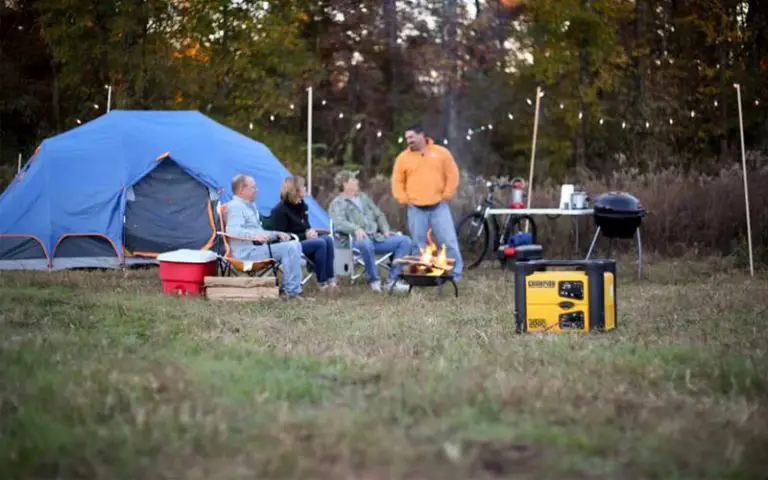Is Kayaking Bad For Your Back?
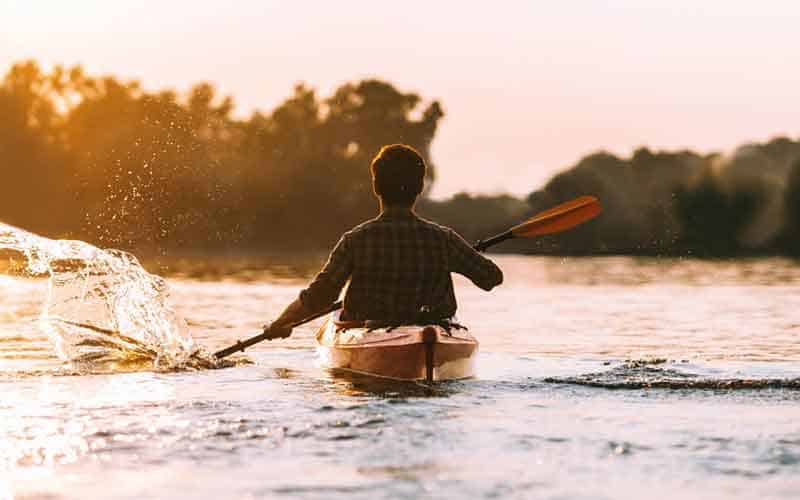
Share this article:
TopNotch Outdoor is independent – we research, test, and rate the top products to help you make the right buying choice. We sometimes use affiliate links and may receive a small commission on your purchase. Learn more…
Hold up!
Before we go forward: No. Kayaking, when done right, does not lead to a back injury.
Now that that’s out of the way let’s talk about why you still get back pain when you go boating and what you need to do to help yourself.
Don’t worry my friend. You’re not the only one with this problem. We will guide you Is Kayaking Bad For Your Back?
Kayaking:
Kayaking is a recreational activity. But it can be exhausting, let’s be honest. Whether you’re out sea kayaking or whitewater kayaking, it’s all the same – you have to move your body.
First, you’ll have to haul your boat to the water with a kayak cart. Then you’ll have to put on your gear. Then you’ll mount the seat. And then, the bulk of the effort, you’ll have to paddle. Well, you can just stop when you’re tired.
Oh wait – you still need to get your kayak out of the water and back in your garage!
Don’t get me wrong.
I love paddling and detaching myself from the land for a while. But kayaking and back issues go hand-in-hand. We just have to expect that.
So after researching, talking to my fellow paddlers, and meditating on my own experiences, we’re finally here. My goal here is to share with you what helped me prevent back problems whenever I go kayaking.
Is your paddle ready?
Then sail on…
Kayaking and Your Core Muscles
Your muscles drive everything you do. They tend to be the ones that get overworked. And do you know where they’re positioned?
You guessed it right!
They’re on your back. They all work together to stabilize your spine in whatever you do. And being in your boat on moving water is a very unstable position. That’s why these muscles are the first ones to complain.
Now take some time to meet your back muscles:
Latissimus Dorsi
The is the largest muscle on your upper body. It covers a wide area around your backbone and helps rotate and extend your arms.
Very useful in kayaking, right?
Rhomboids
They’re located on your upper back, in between your shoulders. They retract and relax your scapula or shoulder blades.
Upper and Lower Trapezius
These two muscles are also for the scapula. But it’s for stabilizing and moving it. They’re at your middle back.
Abdominals and Obliques
While abdominals are located at the front, obliques are at the sides. The obliques are right beside the lower back muscles.
Aside from pulling the chest downward, the obliques help in rotating the backbone. It’s the muscle that’s primarily responsible for torso movements.
See?
From bringing your kayaks to the water to getting in your boat to paddling. And then to paddling again. And then some more. All those muscles get activated and eventually strained.
What Causes Kayaking Back Pain?
First of all…
It may be that you already have previous back injuries. Kayaking only triggers it. But if you don’t and you still get lower back pain, these are the most probable reasons:
Sitting in the L-kayaking position
This is also known as the non-ergonomic position. There isn’t much room in kayaks to move around. Also, this is the optimum position for safety, stability, and movability.
So nobody blames you for the vertical pressure exerted on your spine. Also, even for the horizontal pressure exerted on your lower back region by your legs.
In other words…
Your legs can’t help your spine in supporting your body weight. So the pressure pools at your lower back. Mainly your lower spine or lumbar vertebrae.
This is an inevitable cause of back pain. So what’s there to do?
Not shifting position
You know how metal hinges rust when you don’t move them? Muscles tend to do that too.
A kayak isn’t a football field – Yes, I know that. But it doesn’t mean you have to be frozen in your sitting position. Kayaking may go on for hours. You have to move it, move it somehow too. There are other positions to shift to.
Good ergonomics pay well!
How Does Paddling Build Back Muscles?
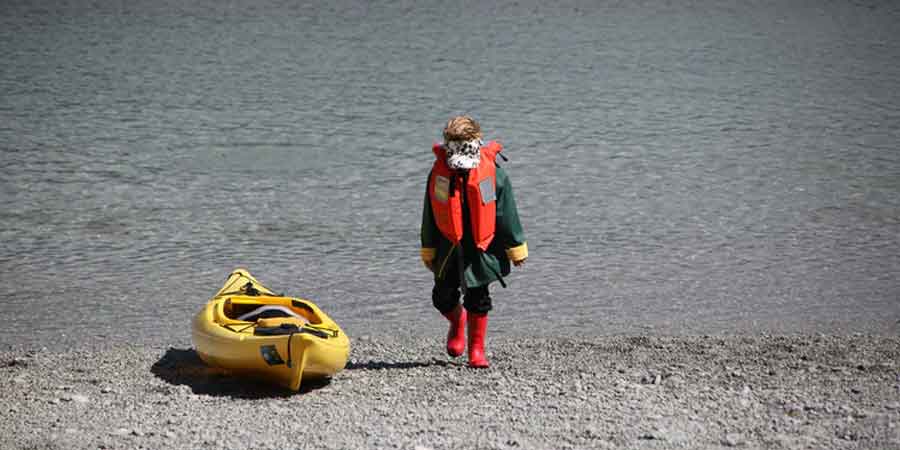
The short answer is:
Every paddle stroke relaxes and contracts your back muscles. Especially the rhomboids. And paddling is the main activity in kayaking. You’ll do it for long hours.
Your lats then get worked out. Your abs and arms too. And before you even knew it, you’ve lost weight!
It’s fine. We can relate…
I can’t count how many strokes I’ve paddled since the start of my kayaking days. Even though I experienced dramatic back pain, I’m still thankful for the strength it has given me. The pain was just a small price to pay.
As the song goes, “What doesn’t kill you makes you stronger!”
How Do I Prevent Back Pain When Kayaking?
It’s not just about the muscle. A bad back can mean damage to your sciatic nerve too. So don’t think that you can just rest once you get tired.
Haven’t you heard?
“A drop of prevention is better than an ounce of cure.” I’m a firm believer in that so I have these tips for you:
Set Your Kayak Up for Comfort
This part is really fun!
You have to get yourself a good kayak seat. There are a bunch of seats available online. And they’re not that expensive. If you read up about it, you’ll find many brands that would suit your needs.
A kayak seat features foam padding, and that’s good for lower back support. Don’t worry about whether or not you’d fit in one. It has adjustable straps so you can custom-fit it to your body type.
But in the first place…
Check if the kayak has ample back support before you buy it. Make sure that the foot pegs are suitable and fit for you. Test if you can still move your body when you sit in your kayak.
You should also choose a kayak that suits your purpose. Is it for fishing or just for fun? Are you a beginner or an experienced paddler? Boats are specifically designed for a specific function. Manufacturers consider comfort too.
The point here is…
The more comfortable you are, the more relaxed. The more relaxed you are, the less tension you’ll have on your muscles. And less tension, less back pain!
Maintain Proper Posture
Good posture is always neglected, but it’s the basics of the basics. If posture is critical when singing, how much more when you go boating?
But what counts as a proper posture?
Sit upright. Relax your shoulders while keeping your spine tall. It’s best to keep your head high too. Then lean forward just a little bit, balancing your center of gravity. And when you have to reach, do it with your arms instead of your torso.
Don’t straighten your legs too much. The neutral position of your legs should be slightly bent at the knees or whatever gives you the best balance. Just stretch it now and then before your knees ache.
And remember:
In kayaking, slouching is a crime!
Use the Correct Paddling Technique
The first thing I learned is…
When paddling, the blades should cut through the water surface parallel to your toes. Keep them about two feet away from the sides of your kayak. And the shaft should be as vertical as possible.
Remember to keep the blades underwater as you pull them toward you. If you’re moving forward, you’re in the right direction.
Also…
Relax. Don’t grip your paddle too tightly, don’t grip too loosely. Again – less tension, less pain.
Carry Your Kayak Correctly
There’s a proper way of carrying your kayak or canoe. But your feet can only survive so much.
But the only thing I can advise you is:
Get yourself a kayak trolley, dolly, or cart. There’s a lot to choose from online, and not all of them are expensive.
If you have a bad back like me – I guess you won’t be here if you don’t – just go and buy a cart. It’s useful not just for transporting your boat but also for your paddle and the rest of your gear.
Just like a boat seat, a cart provides more support for your back!
Stretch Before and After Your Trip
Sitting for hours may not look like an extraneous activity, but it is. Especially when coupled with strokes on your paddle.
Exercise is the key.
Ask any athlete – or a doctor. Warm-ups, stretches before activity, and cool-downs can prevent a bad lower back from getting worse.
Look for Opportunities to Change Positions
Here’s a secret:
Stretching can do wonders! Don’t wait until your lower back has started yelling before you stretch it out. You can do it every ten minutes or so.
If you’re scared to move too much…
Just wait when the water’s calmer. Or before you go to dangerous rapids, do your stretches first. In other words, you have no excuse. You really must do it.
Treat Sore Muscles at Home
Take note:
If you have existing back problems, consult your doctor. You may need physical therapy and the likes. I’ve read online that people with herniated discs are not allowed to go paddling except when they wear a back brace.
Oh, and obey your physical therapist too, alright?
Once that’s out of the way…
You can proceed with your boating exercises! But if you happen to still get the aches even after doing the precautions, maybe you’re already straining yourself too much.
When you get home, stretch and exercise! Do it regularly too. For kayaking, you can focus on your lower lumbar spine. You can look for routine exercises online to help you.
And of course…
Make friends with heating pads. But… Before taking painkillers, ask your doctor first.
Conclusion: Is Kayaking Bad For Your Back
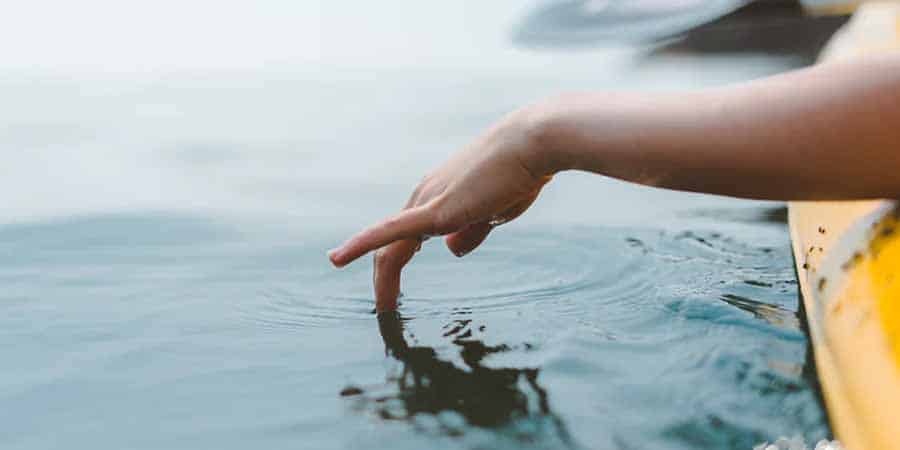
Lower back pain is annoying – yes, we’ve all been there. It affects a lot of physical activity.
But most of all…
It limits our kayaking hours!
I hope this article has helped you understand why we get back pain from kayaking – and how we can reduce its risks.
Anyway, we’re kayakers! Nothing’s going to stop us from paddling.
You know what they say…
Once a kayaker, always a kayaker. Well, nobody really said that, but you get my point.
Well, comrade, it’s been a splash… I’ll see you in our next adventure!
Related: Best Kayak Seat (2024)

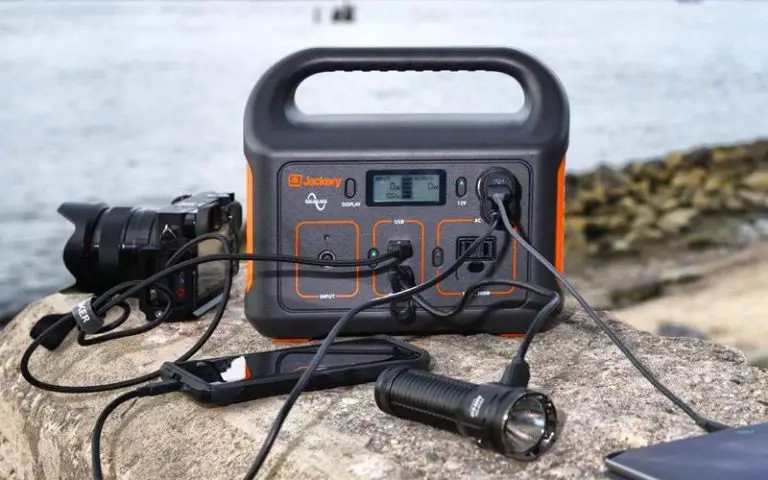

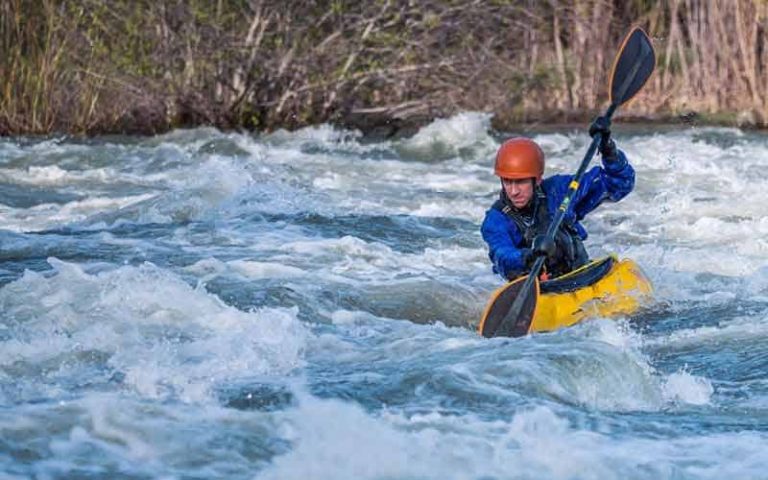
![Should I Get A Kayak Cart?<br>[What Kind Should I Get] Should I Get A Kayak Cart?[What Kind Should I Get]](https://topnotchoutdoor.com/wp-content/uploads/2021/05/Is-Kayaking-Bad-For-Your-Back-FI-768x480.jpg)
